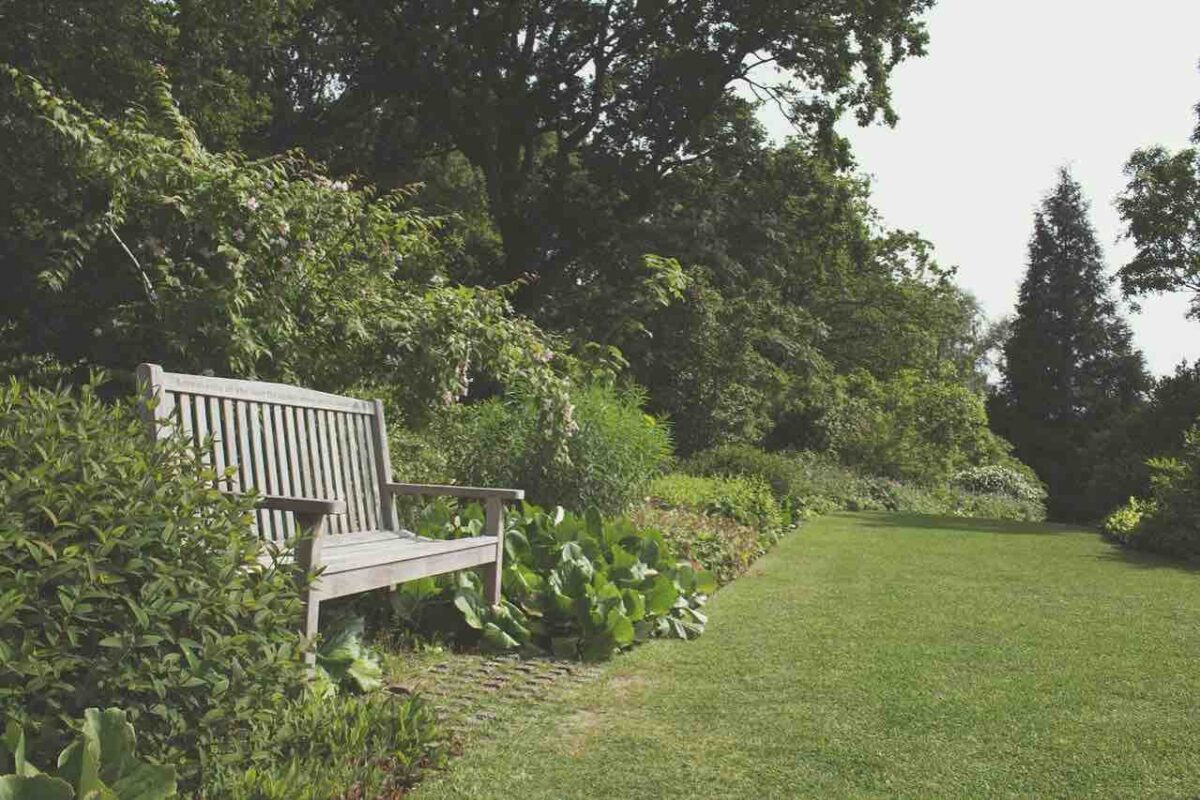7 Tips for a Great Organic Lawn

Are you interested in growing a great organic lawn? If so, you’ll want to follow these tips for a landscape that’s lush, green – and most importantly, chemical-free.
Going au naturel with your lawn is a great goal to have. While it does take a bit more patience and work upfront to get your lawn looking great, over time, an organic lawn will thrive with far less upkeep and maintenance than one that requires the constant use of fertilizers, pesticides, and other synthetic products.
Here are some simple tips to follow.
7 Tips for a Great Organic Lawn
Why bother growing an organic lawn? There are a few great reasons to consider doing so and it’s something that anyone can do.
For one, it will require less weed control, fewer pesticides, and fewer fertilizers. It resists pests and weeds much better than one that requires constant chemical interventions. It is also more wildlife-friendly.
Grass thrives in nutrient-dense soil and while it takes longer to get things up and running, over time, it will be more self-sufficient.
That means less work for you and a more attractive, healthier lawn – sounds like a win-win!
Ready to get your lawn looking as gorgeous as can be? Here are seven simple steps to get you on the right track.
1. Test Your Soil
The best thing you can do for your lawn is to understand exactly what it needs. Test your soil, either by buying a home testing kit or sending a sample out to the local cooperative extension service. This will help you determine the pH level of your lawn as well as what nutrients it contains (and those in which it is deficient).
A soil test will help you determine the best type of seed for your lawn, help you develop a weed prevention and treatment strategy, and even tell you what (if any) kind of fertilizer is needed.
2. Mow Conservatively
Only mow when it’s absolutely necessary – and when you do, make sure those mower blades are sharp. Mowing when it’s not needed is futile, since it takes extra work and can also damage developing grass. Once the weather heats up, your grass might go dormant and require little to no mowing at all.
Don’t cut the grass too short and mow when it’s cooler, later in the day, to protect developing root systems.
3. Rethink Your Watering Strategy
Water your lawn only when absolutely necessary – in most cases, your lawn only needs about an inch of water per week, which is likely provided by natural rainfall. Water early in the day and consider using automated sprinklers to make sure your lawn is only getting a set amount of moisture.
Water deeply but infrequently – if your grass is well-established, you can water once a week for an hour.
4. Use Compost
Instead of relying on potentially harmful store-bought fertilizers – these can burn grass and kill beneficial soil microorganisms – use compost to fertilize your soil. It is the best organic lawn fertilizer you can use. Compost will help aid growth by introducing beneficial microbes, neutralizing the soil pH, and displaying all the nutrients your grass needs to grow tall and healthy.
5. Let Sleeping “Dogs” Lie
…and when we say “dogs,” we mean insects. Most insects you find on your lawn aren’t harmful in the slightest. Only about 2% of all garden insects, according to Organic Plant Care, LLC, are actually harmful. If it doesn’t look like the bug you’ve spotted is doing any damage, leave it alone.
6. Don’t Pick Up Grass Clippings
Ditch the bagger and let the grass clippings remain where they are. This is one of the best ways you can organically fertilize your lawn. The clippings will break down gradually, adding nitrogen and other nutrients back to the soil to fertilize it as they break down.
7. Learn to Live With Weeds
While it might drive you nuts to see dandelions or other wild herbs growing on your lawn, remember that you’re not growing a golf course – you don’t need to have a picture-perfect landscape.
A few dandelions here and there is not only going to eliminate the need for a herbicide (which can pose the same risks as synthetic fertilizers) but can also help improve the quality of your soil, thereby improving the health of your lawn.
Be Patient!
When it comes to organic lawn care, the most important thing to keep in mind is that you are not going to see immediate results.
When you use fertilizers like compost, you’ll notice that there isn’t the immediate, dramatic green-up you get when you use synthetic products on your lawn. You’ll need to be patient to give the nutrients time to be absorbed!
There’s no quick fix when you’re trying to grow an organic lawn – but trust us, the long-term results will be worth it! Be patient and give it time.

Author’s Bio:
Kym Preslar is a bit of a gardening and home improvement fanatic. She’s been working on her garden for over 5 years and loves writing about everything landscape-related. Whether it’s keeping care of sod or the greenhouse, she’s been there and done it all. Currently, she’s enjoying her time working at SodLawn as their Content Manager.
